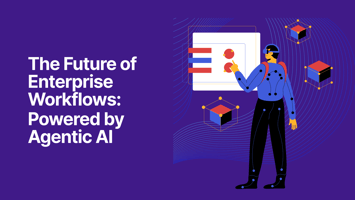Artificial Intelligence is no longer just a buzzword in customer support - it's a performance...
AI in Customer Success: How to Predict Churn and Automate Playbooks

Customer success teams today are being asked to scale relationships without sacrificing the human touch. That’s a tall order, especially when teams are managing hundreds of accounts at a time. This is where artificial intelligence can be a game-changer. The right AI tools can help you spot early signs of churn, automate repetitive workflows, and make smarter decisions about where to focus your efforts.
In this post, we’ll walk through how AI is helping CSMs go from reactive to proactive, and why that shift matters more than ever.
Predicting Churn with Behavioral Signals
Most churn doesn’t happen overnight. It builds up over weeks or months through subtle signals:
-
Declining product usage
-
A spike in support tickets
-
Silence from a once-engaged champion
AI tools can track these patterns at scale and flag accounts that may be heading in the wrong direction.
Instead of relying on gut feelings, your team can use AI-driven health scores that factor in:
-
Product usage
-
Sentiment
-
NPS responses
-
Support interactions
That means your CSMs spend less time guessing and more time taking action with the right accounts.
Automating Playbook Execution
Playbooks are great - until they become a burden to execute. Logging meetings, sending emails, and updating CRM fields can eat up hours each week. AI copilots lighten the load by automating these actions based on real-time signals.
For example, if a customer hits a usage milestone or goes dark for two weeks, AI can:
-
Launch a check-in sequence
-
Flag the account for review
-
Suggest next steps
It’s like having a behind-the-scenes assistant making sure nothing slips through the cracks.
Surfacing Upsell and Expansion Opportunities
AI isn't just about preventing churn. It can also help you grow accounts. By analyzing patterns across your customer base, AI can identify which accounts are ready to expand—based on:
-
Product usage trends
-
Number of active users
-
Engagement and milestone activity
It can also recommend the right upsell motion:
-
Invite a team to training
-
Offer a new product tier
-
Suggest a usage-based upgrade
When CSMs have these insights at their fingertips, they can time their outreach perfectly.
Translating Customer Intent into Action
One of the most powerful use cases for AI in CS is helping CSMs act on the signals they already have. AI copilots like PixieBrix can read through customer emails or meeting notes and instantly:
-
Tag sentiment
-
Summarize key points
-
Trigger workflows in tools like Salesforce or Gainsight
Instead of spending time transcribing notes or manually tagging risk themes, CSMs can stay focused on strategy and relationships. AI handles the administrative work and surfaces insights that might otherwise go unnoticed.
How can AI help customer success teams?
AI helps customer success teams by predicting churn, automating playbooks, surfacing upsell opportunities, and summarizing key account interactions.
Can AI automate customer success workflows?
Yes. AI copilots can trigger onboarding sequences, send check-in emails, pre-fill CRM fields, and tag key themes in customer conversations.
What tools use AI in customer success?
Tools like PixieBrix, Gainsight, Totango, and Gong use AI to enhance productivity, visibility, and proactive account management for CSMs.
Can AI detect churn risk?
Yes. AI analyzes usage, sentiment, and engagement trends to flag at-risk accounts so CSMs can intervene early and reduce churn.
AI Is a Strategic Advantage for CSMs
AI isn’t about replacing CSMs. It’s about removing the busywork and surfacing the insights that matter most. When CSMs have more time and better data, they can do what they do best:
-
Build trust
-
Solve problems
-
Drive value
If you're looking to modernize your customer success function, AI is no longer a nice-to-have. It's a strategic must-have.
Want to see how AI fits into the bigger picture? Read our complete guide to AI in customer experience and support →


